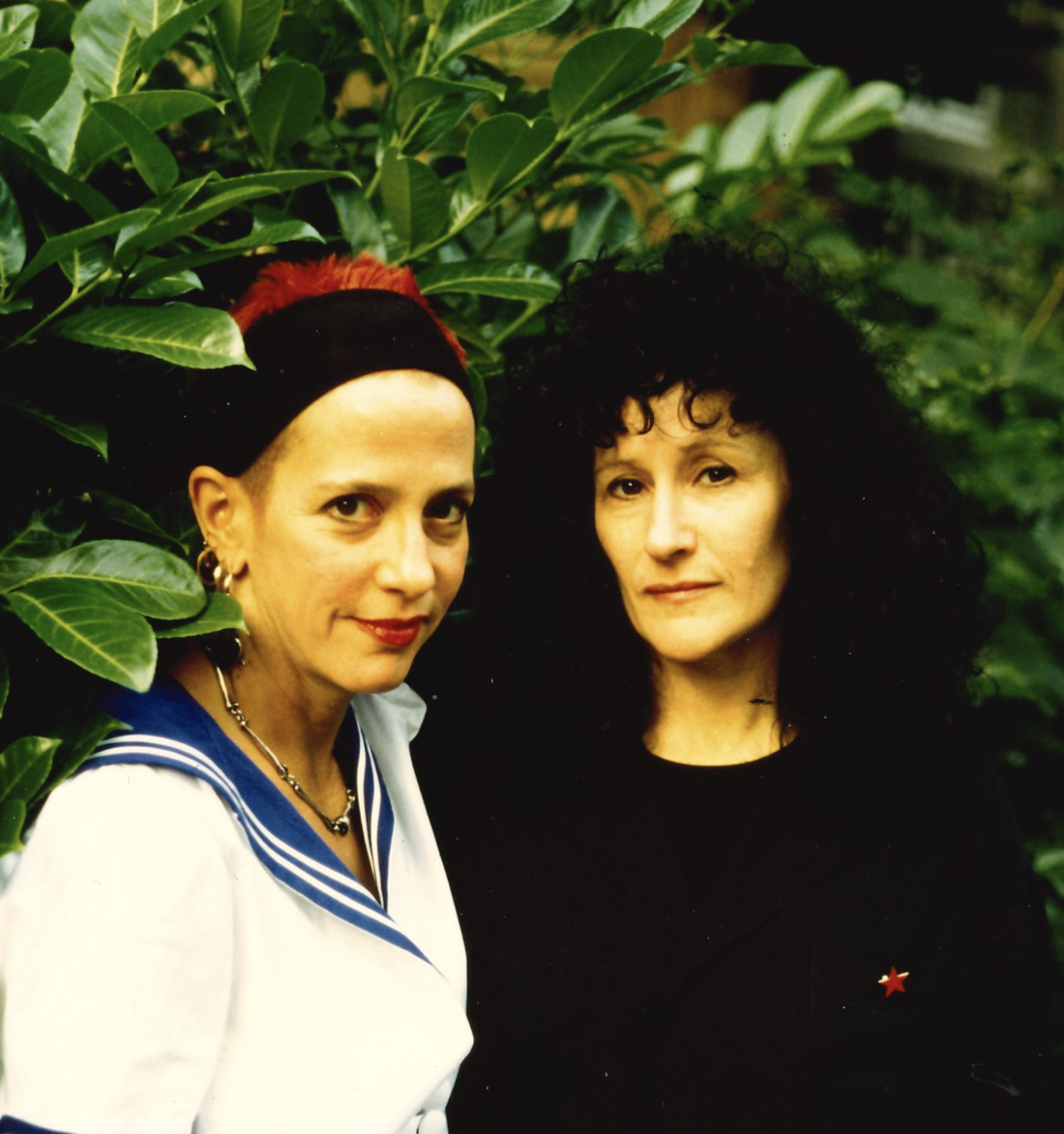seX & Literature: the eternal life of Kathy Acker
Picture this. It’s April, 1990. Dennis Cooper and Mary Gaitskill are reading at The Kitchen in Chelsea. Cooper reads from his soon-to-be published novel, Frisk, accompanied by performance artists and actors. Gaitskill reads from Two Girls, Fat and Thin. In the audience sits Kathy Acker, Lynne Tillman, Ann Patty (Lynne's publisher), and others. There’s a feeling of competition, intrigue, a particular blend of drama stirred by artists vying for attention, connection. The scene, of course, revolves around Kathy Acker. She whispers to Lynne after Cooper’s reading, “That was the worst. What’s happened to Dennis?” And after Gaitskill reads, Acker pulls Lynne aside and asks her what she thinks. Lynne replies, “I think Mary’s got something. She’s a good writer.” Lynne also mentions that her debut novel, Haunted Houses, had an influence on Gaitskill. Acker storms out of The Kitchen. “Where are you going?” asks Lynne. “Home,” Acker replies. “It has nothing to do with you. It’s writing.”
This moment reveals Kathy Acker's attachment, competitiveness, and at times fractious relation to others. Of course, Acker admired Cooper, but she viewed the young Gaitskill as a threat. Kathy Acker’s relation to art was a life-sustaining, all-or-nothing pursuit. For her, writing was an “occult tool of survival and transformation.” It was not purely an act of catharsis; it had the possibility of creating an entirely new Kathy Acker distinctly separated from the world of her claustrophobic New York City upbringing and the confines of a male-dominated literary and art world. Her essential relation to literature and celebrity-like insistence to be loved created a force, which formed an altogether different writer, and developed a need to be involved in the many cultural scenes throughout her life. From the early days of the Black Mountain poets, Bernadette Mayer and Anne Waldman's Poetry Project to her involvement with New Narrative in San Francisco, intermittent teaching, and early internet culture, Kathy Acker existed practically everywhere. So, the real genius of Jason McBride’s Eat Your Mind: The Radical Life and Work of Kathy Acker is his ability to use her life as a prism to sketch a cultural history, rather than a literary analysis, and provide adequate attention to underappreciated movements and artists who are arbiters of the current and future trends of literature.
McBride refers to Chris Kraus’s controversial biography, After Kathy Acker, (following Kraus’s own resurgence) as singlehandedly exposing an entire generation to Kathy Acker and recontextualizing her as an essential writer. McBride’s biography defines Acker further, placing her within a tradition crossed with stories from Amy Scholder, Matias Viegener, Lynne Tillman, and others. Notably in the introduction, McBride uses Michael Silverblatt’s article in the Los Angeles Times to describe a certain type of writer in the nineties, e.g. Acker, Dennis Cooper, Lynne Tillman, Bret Easton Ellis, and Gary Indiana. They shared “a belief in the body as the locus of knowledge; a pervasive sexual anxiety; an obsession with abjection and dysfunction.” All of them are concerned with orienting toward the present, aware of the tradition before them, and using their autobiography as a symbolic (and sometimes literal) means to deconstruct trauma, political decay, and repressive machinations. This is one reason why Acker, and the rest of these writers, will always feel contemporary, fresh, interesting, and convicting. They exist as guideposts for any aspiring writer, artist, or person searching for meaning in a collapsing world.
 Lynne Tillman/ Kathy Acker | Photograph by Dirk Görtler. Frankfurt, 1993
Lynne Tillman/ Kathy Acker | Photograph by Dirk Görtler. Frankfurt, 1993Kathy Acker was born on April 18, 1947 in New York City. Her childhood, spent entirely on the Upper East Side, could be described as a culturally suffocating, loveless ordeal. Her mother, Claire, lived solely on inheritance from the family-run glove manufacturing business in Manhattan. Kathy grew up assuming Albert Alexander, aka Bud, was her father, until later in her twenties she uncovered the identity of her biological father due to a small trust fund that was left to a “Karen Lehman” (Kathy’s legal name was Karen and Lehman was the hint that revealed her origin). His name was Harry Lehman, Jr., who was the scion of the family of a successful purveyor of hair tonics, shampoos, and other products. The constrained relationship with her mother, Claire, and the consternation over the abandonment of her father would always be at the forefront of Acker’s work.
As McBride mentions in the biography, there are no journals or remnants of Claire’s inner life, but Acker wrote obsessively about her. McBride writes, “the Claire that haunts Acker’s writing is a complex and enigmatic figure, a mother both remote and authoritarian, malevolent and pathetic. From the beginning, when she gives Kathy a name that she hates, Claire makes her a child of derision. She rarely expresses love or affection, never gives Kathy gifts, even at Christmas.” All of this disdain, Acker believed derived from her own birth, as if Claire blamed the loss of Kathy’s father and the reservation of the rest of her life solely on this event. “For Kathy, Claire never fulfilled her potential, whatever that potential may have been. She was a quintessential 1950s American housewife, a dumb stereotype slowly wasting her life, ultimately consumed by her own dissatisfaction.” Acker always framed Claire as a sort of villain and victim, obviously aware of the circumstances and narrow possibilities of a woman in Post-World War II America. She writes, “On the one hand, my mother was or is my lover. On the other hand, my mother was a victim in the male-defined society. So, if I identify with her, I’m forced to define myself as a victim. So how do I deal with this double bind? Go mad? (Pun intended.) Irigaray says we, females, have to reinstate the mother as another person. I take that rather seriously.”
So, how does Acker separate herself from Claire, the family, this “male-defined society”? Sex and literature. “She found…not just a place to escape but a place for everything. Books were the most romantic, even sacred, of objects; they were time machines, genie lamps, merit badges, force fields. They provided insulation from the actual life she led, and opened up the possibility of other, more captivating lives; she could, literally, lose herself in books.” The imaginative variations of literature and her own drive was born out of the loveless and vapid circumstance of her childhood. Like Susan Sontag’s fraught relationship with her mother, literature existed as a way to cope with reality and form a new narrative and ultimately recognition, which would bury the memory of her family and create an array of lovers and ancestral admirers.
Kathy Acker used sex, like literature, as a tool to absorb information, gain attention, and recreate herself. McBride writes, “For her, monogamy was moot, and she had countless lovers, both men and women. Sex fascinated her, as a source of personal, complicated pleasure, but also as a way to understand power, gender, and self…Her legion of famous lovers included film scholars P. Adams Sitney and Peter Wollen; writers Rudy Wurlitzer, Hanif Kureishi, Lidia Yuknavitch, and Sylvère Lotringer.” Sex, as you can imagine, was vital to Kathy Acker, and in the context of artists and writers like Carolee Schneemann, Diamanda Galás, Linda Montano, and Karen Finley, sex was an endless subject to expose, investigate, and manipulate. The philosopher Johnny Golding said, “Kathy’s ‘fundamental’ sexual identity was writer. Her sexuality was writing. She was having a sexual relationship with that.” For Acker, she was continually writing toward the body in all its physical pain and pleasure. She found the struggle and complication of sex as an immediate bridge into a sort of truth, or a horrible mirror of damaged programming. In an interview in RE/Search’s Angry Women, Kathy Acker says:
“It’s like Nietzsche’s Myth of the Eternal Return: you can view the world without ‘god’ as ‘demonic’ (in which you make the ‘demons’ or the ‘horrible’ forces of the body). Whereas: if you simply accept the Eternal Return, then the body becomes the area of joy, and you value life and you value all the changes and all that is in flux. So, how can we institute a society where that search is both individual and collective at the same time?
“What a society has done is: tried to make the search simply individual; also, label those individuals who are searching with their bodies as “weird,” “evil,” “freaks,” “queer” – whatever words you want to use. But we could proclaim, ‘We’re normal!’ because we are normal! It’s normal to love your body; it’s normal to have a body; it’s normal to see through the body and feel through the body. And during ecstasy, the body and the soul are united.”
Of course, other extenuating factors shaped Acker’s writing on the body, which evolved over time. McBride details her obsession with piercings, tattoos, bodybuilding, and her own experiments with gender, especially after her diagnosis of breast cancer and double mastectomy. This type of writing through the body, desire, and an intense honesty had a tremendous influence. Rachel Nagelberg, a Los Angeles writer and somatic practitioner, told me encountering Kathy Acker's writing was like "reading a long lost sister who was able to radically explore intense emotional states via language and break down form in a meta self-referential way that was honest, painful, energized, and fearless. Kathy and I both navigate codependency, so it showed me how writing could not only be cathartic, but reveal a radical honesty unapologetically and playfully, while utilizing the intellect and embedded cultural contexts."
It's this radical approach to literature, born out of Acker's complicated upbringing and Burroughs' breakdown of authority and repression (Acker’s technique of appropriation), that continues to convict readers and open up the possibility of an alternative path toward investigating tradition, using sex as a priority to understand power, and constantly reinventing one’s self through style, media, and literature. Her influence continues in the work of Virginie Despentes and other writers, especially those, like David Velasco and Fiona Alison Duncan, who fluctuate between the literary and art world. This is why Jason McBride’s biography is so important. It exists as an elegant articulation of why Kathy Acker will always hover over the zeitgeist, visible or not, and continue far into the future.
Taylor Lewandowski lives in Indianapolis, IN. His work has been published in Bookforum, Vol. 1 Brooklyn, The Gay & Lesbian Review, and elsewhere. He also edited the photography book, Pathology (Nighted), collecting crime scene photographs from his grandfather, who was a coroner in northern Indiana.
Keegan Swenson is the essay and interview editor for Forever Magazine. He's working on a novel, he promises.
